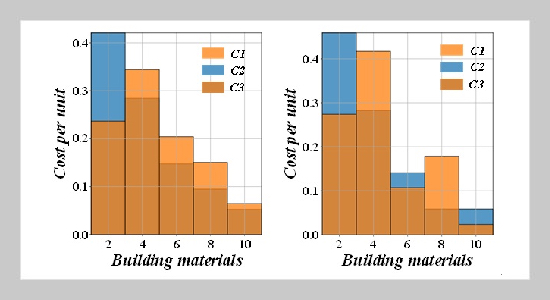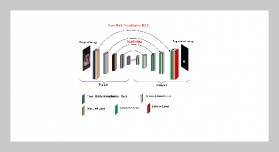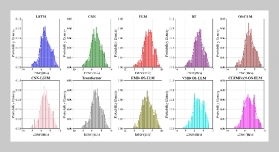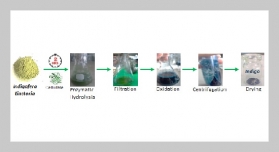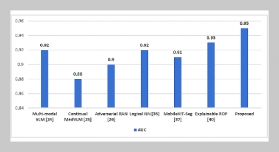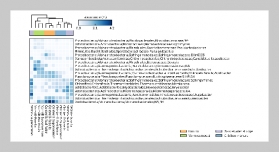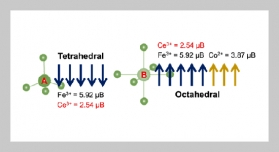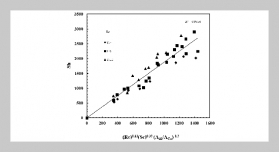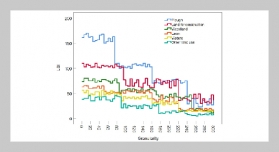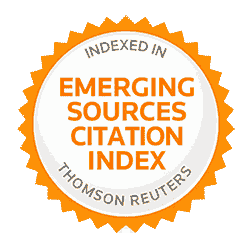- [1] J. Garrote, N. Bernal, A. Díez-Herrero, L. Martins, and J. Bodoque, (2019) “Civil engineering works versus self-protection measures for the mitigation of floods economic risk. A case study from a new classification criterion for cost-benefit analysis" International journal of disaster risk reduction 37: 101157. DOI: 10.1016/j.ijdrr.2019.101157.
- [2] S. Tetsopgang, B. B. Bongsiysi, L. S. Dinayen, and T. D. Nkenglefac, (2020) “Geotechnical assessment of sand for civil engineering in western Cameroon" The Extractive Industries and Society 7(2): 497–504. DOI: 10.1016/j.exis.2019.05.005.
- [3] X. Wang, A. South, C. Farnsworth, and B. Hashimoto, (2024) “Fromthree-pillars to three-environments: Shifting the paradigm of sustainability in civil and construction engineering" Cleaner Engineering and Technology: 100748. DOI: 10.1016/j.clet.2024.100748.
- [4] B.XuandY.Yi,(2020)“Useofladle furnace slag containing heavy metals as a binding material in civil engineering" Science of The Total Environment 705: 135854. DOI: 10.1016/j.scitotenv.2019.135854.
- [5] W. Zhang, H. Yu, B. Yin, A. Akbar, and K. Liew, (2023) “Sustainable transformation of end-of-life wind turbine blades: Advancing clean energy solutions in civil engineering through recycling and upcycling" Journal of Cleaner Production 426: 139184. DOI: 10.1016/j.jclepro.2023.139184.
- [6] A. M. Alshehri, F. Al Hajj, A. Waqar, A. S. Bageis, M. Houda, and O. Benjeddou, (2024) “Building information modeling (BIM) driven performance-based con struction for the optimization of sustainable and smart structures development" Environmental Challenges 16: 100980. DOI: 10.1016/j.envc.2024.100980.
- [7] D. Amaripadath and D. J. Sailor, (2024) “Reassessing energy-efficient passive retrofits in terms of indoor environmental quality in residential buildings in the United States" Energy and Buildings: 114564. DOI: 10.1016/j.enbuild.2024.114564.
- [8] R. Andersen, A. S. Ravn, and M. W. Ryberg, (2022) “Environmental benefits of applying selective demolition to buildings: A case study of the reuse of façade steel cladding" Resources, Conservation and Recycling 184: 106430. DOI: 10.1016/j.resconrec.2022.106430.
- [9] J.-D. Gu. Consolidating polymeric materials for protection of cultural heritage. 2024. DOI: 10.1016/j.ibiod.2024.105844.
- [10] E. Hoxha, N. Francart, B. Tozan, E. B. Stapel, S. R. B. Gummidi, and H. Birgisdottir, (2024) “Spatiotemporal tracking of building materials and their related environ mental impacts" Science of the Total Environment 912: 168853. DOI: 10.1016/j.scitotenv.2023.168853.
- [11] T. Jayasanka, A. Darko, D. Edwards, A. P. Chan, and F. Jalaei, (2024) “Automating building environmental assessment: A systematic review and future research directions" Environmental Impact Assessment Review 106: 107465. DOI: 10.1016/j.eiar.2024.107465.
- [12] L. Jing, T. Shi, Y. Chang, X. Meng, S. He, H. Xu, S. Yang, and J. Liu, (2024) “Cellulose-based materials in environmental protection: A scientometric and visual analysis review" Science of The Total Environment: 172576. DOI: 10.1016/j.scitotenv.2024.172576.
- [13] X.LiandZ.Ding,(2024)“Decision-making mechanisms of greenwashing behaviors of building materials manufacturers: a media disclosure and consumer skepticism perspective" Environmental Technology & Innovation 35: 103705. DOI: 10.1016/j.eti.2024.103705.
- [14] X. Mei, C. Liu, and Z. Li, (2024) “Research progress on functional, structural and material design of plant inspired green bionic buildings" Energy and Buildings: 114357. DOI: 10.1016/j.enbuild.2024.114357.
- [15] I. B. Muhit, E. L. Omairey, and V. G. Pashakolaie, (2024) “A holistic sustainability overview of hemp as building and highway construction materials" Building and Environment: 111470. DOI: 10.1016/j.buildenv.2024.111470.
- [16] P. K. Ohms, L. H. Horup, S. R. B. Gummidi, M. Ry berg, A. Laurent, and G. Liu, (2024) “Temporally dynamic environmental impact assessment of a building stock: Coupling MFA and LCA" Resources, Conservation and Recycling 202: 107340. DOI: 10.1016/j.resconrec.2023.107340.
- [17] X. Xu, P. Xu, J. Zhu, J. Liu, and Q. Xue, (2022) “How to minimize the embodied environmental impact of green building envelope? An automatic optimization method" Environmental Impact Assessment Review 93: 106732. DOI: 10.1016/j.eiar.2021.106732.
- [18] E. Arinaitwe, M. McNamee, and M. Försth, (2024) “Is the fire performance of phase change materials a significant barrier to implementation in building applications?" Journal of Energy Storage 94: 112421. DOI: 10.1016/j.est.2024.112421.
- [19] J. Y. Choi, Y. U. Kim, J. Nam, S. Kim, and S. Kim, (2023) “Enhancing the thermal stability and fire retardancy of bio-based building materials through pre-biochar system" Construction and Building Materials 409: 134099. DOI: 10.1016/j.conbuildmat.2023.134099.
- [20] J. Y. Choi, J. Nam, H. Yuk, S. Yang, and S. Kim, (2024) “Enhancing the hygrothermal performance of corn cob residue-based eco-friendly building materials through biochar and microencapsulated phase change material in corporation" Journal of Building Engineering 89: 109189. DOI: 10.1016/j.jobe.2024.109189.
- [21] A.S. R. Godoy, L. E. Peisino, G. Rolón, and B. B. Raggiotti, (2024) “Firing the wall: A novel way to protect earth buildings" Construction and Building Materials 445: 137878. DOI: 10.1016/j.conbuildmat.2024.137878.
- [22] M. Gonçalves, A. Figueiredo, R. M. Almeida, R. Vicente, A. Samagaio, and J. Ko´ sny, (2024) “Thermal performance evaluation of a light steel framing building with macroencapsulated phase change materials in a Mediterranean climate" Energy and Buildings 323: 114837. DOI: 10.1016/j.enbuild.2024.114837.
- [23] G. Jia, J. Guo, Y. Guo, F. Yang, and Z. Ma,(2024) “CO2 adsorption properties of aerogel and application prospects in low-carbon building materials: A review" Case Studies in Construction Materials: e03171. DOI: 10.1016/j.cscm.2024.e03171.
- [24] P. Kryvenko, I. Rudenko, P. Sikora, M. Sanytsky, O. Konstantynovskyi, and T. Kropyvnytska, (2024) “Alkali-activated cements as sustainable materials for re pairing building construction: a review" Journal of Building Engineering: 109399. DOI: 10.1016/j.jobe.2024.109399.
- [25] W. Lin, J. Zeng, Z. Gao, Y. Wang, J. Cheng, Y. Wang, and S. Li, (2024) “Double-layered phase change material microcapsules with enhanced solar thermal conversion performance and fire safety for buildings" Construction and Building Materials 449: 138487. DOI: 10.1016/j.conbuildmat.2024.138487.


